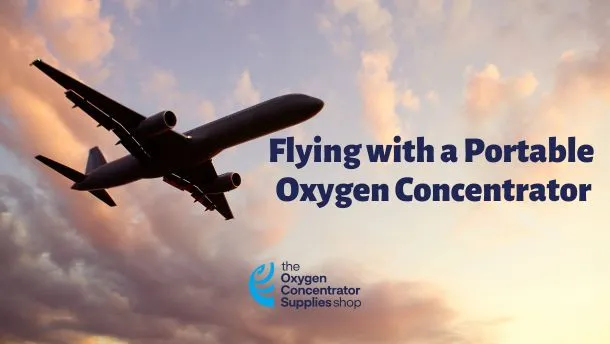
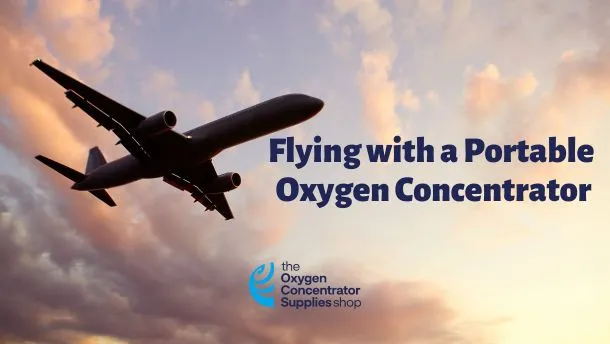
The American Medical Association reports that more than 30 million Americans have chronic lung disease and an estimated 800,000 to 1 million require home oxygen therapy.1 Travelers with respiratory illnesses must have portable oxygen concentrators or POCs readily available.
Portable oxygen concentrators filter ambient air to generate supplemental oxygen. In 2016, the FAA updated its approval process for portable oxygen concentrators. Here is a list of POCs that meet FAA requirements for in-flight use.2
For individuals who suffer from a respiratory disease that requires supplemental oxygen, use the checklist to ensure a smooth flight with your POC.
Check if Your Portable Oxygen Concentrator is FAA Approved
A portable oxygen concentrator device will clearly indicate if it is FAA approved on the product label or within the manual. While considering which POC to purchase, double-check that the unit is FAA-approved if you intend to use it for in-flight use.
Here are some top picks for travelers who need to carry their oxygen concentrator on a flight.
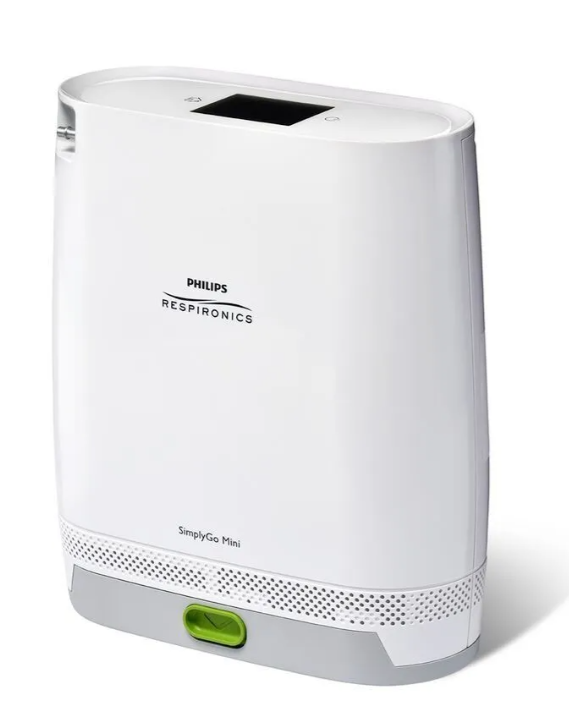
Philips Respironics SimplyGo Mini Portable Concentrator
- Weight: 5-6 lbs with battery
- Flow Settings: 1-5 pulse dose only
- Sound: 43 dBA at 2 pulse
- Altitude: up to 10,000 feet
- FAA-approved
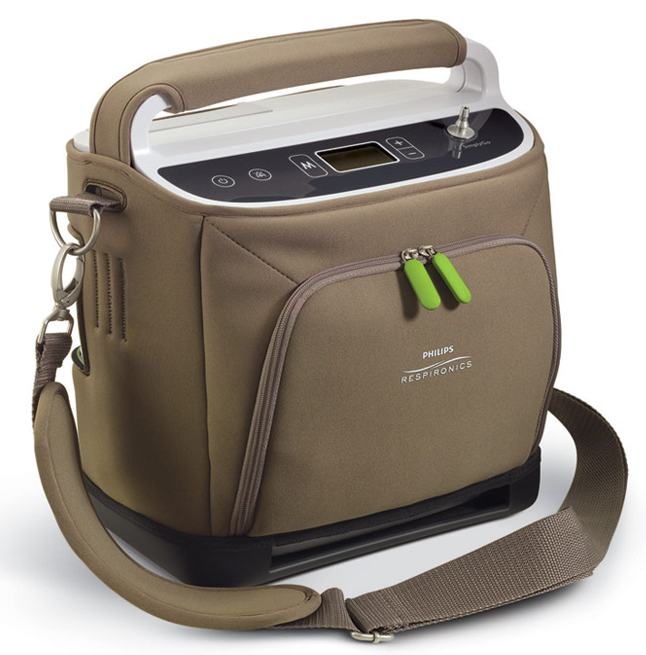
Philips Respironics SimplyGo Portable Oxygen Concentrator
- Weight: 10 lbs with battery
- Flow Settings: 1-6 pulse dose or 0.5-2 LPM continuous flow
- Sound: 43 dBA at 2 pulse
- Altitude: up to 10,000 feet
- FAA-approved
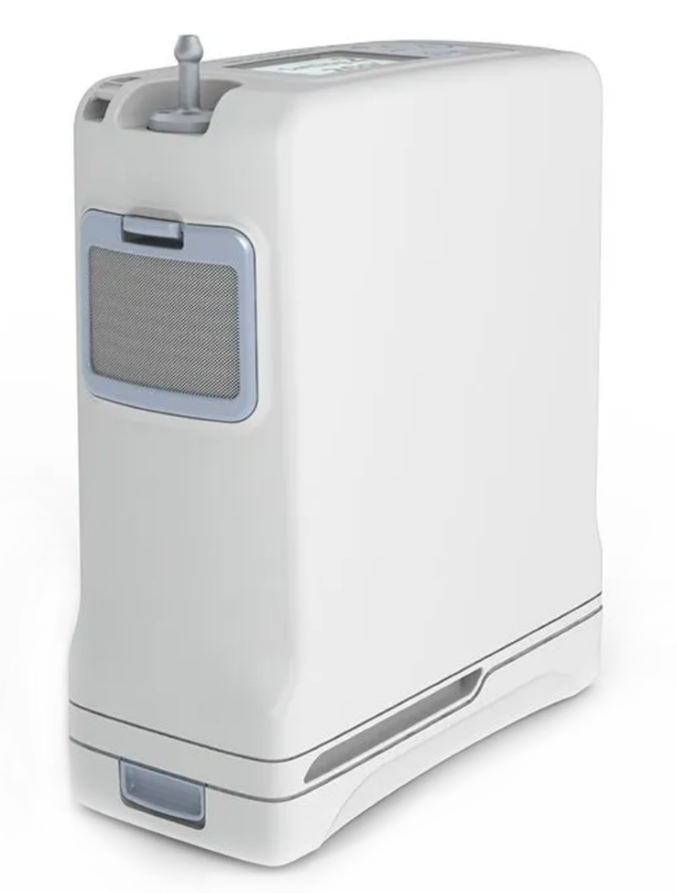
Inogen One G4 Portable Concentrator
- Weight: 2.8-3.3 lbs with battery
- Flow Settings: 1-3 pulse dose only
- Sound: 40 dBA at 2 pulse
- Altitude: up to 10,000 feet
- FAA-approved
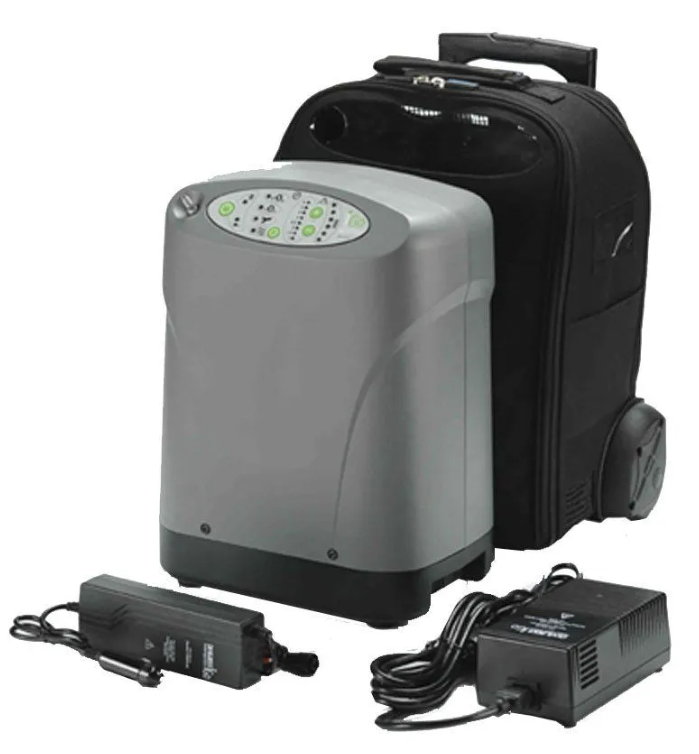
DeVilbiss iGo Portable Concentrator
- Weight: 19 lbs with battery
- Flow Settings: 1-5 pulse dose or 1-3 LPM continuous flow
- Sound: 40 dBA at 3 pulse
- Altitude: up to 13,123 feet
- FAA-approved
Operation Altitude of Other Oxygen Concentrators
|
Oxygen Concentrator |
Maximum Altitude |
|
SeQual Eclipse 5 |
13,123 feet |
|
AirSep Freestyle |
12,000 feet |
|
Respironics SimplyGo |
10,000 feet |
|
Inogen One G3 |
10,000 feet |
|
Respironics SimplyGo Mini |
10,000 feet |
|
Inogen One G4 |
10,000 feet |
|
Inogen One G5 |
10,000 feet |
|
CAIRE Freestyle Comfort |
10,000 feet |
|
ResMed Mobi |
10,000 feet |
|
Inogen At Home 5L |
10,000 feet |
|
Caire Companion 5 |
9,878 feet |
|
Invacare Perfecto |
13,129 feet |
|
Respironics EverFlo |
7,500 feet |
Flying with a Portable Oxygen Concentrator
Things to Consider Before Your Flight
Here are some factors that you need to check before flying with a portable oxygen concentrator:
Physician Involvement
Be sure your doctor knows you will be traveling and make sure you have all contact information for that doctor in the event of an emergency while away from home.
FAA Compliance
Make sure that the portable oxygen concentrator you plan to take on your trip is FAA approved. That way you can use it during the flight if you have trouble breathing.
Battery Requirements
Make sure you have enough battery power to recharge your portable oxygen concentrator while away from home. Consider backup batteries if you might be away from power sources such as on a camping trip.
Things to Consider During Your Flight
Here are some factors that you need to check when flying with a portable oxygen concentrator:
Device Storage
Be sure you have proper storage for your portable oxygen concentrator and accessories. You want your device to be safe during the trip and also easy to carry as you travel.
Device Manual
Bring along your portable oxygen concentrator manual. You may need it if you run into troubleshooting problems with your portable oxygen concentrator. The manual provides a handy reference to resolve common issues.
Cabin Pressure
Check to see the cabin pressure of your flight and if your portable oxygen concentrator will work with that pressure. You may need to stow your POC until you arrive if it does not adapt to your flight’s cabin pressure.
Seating Requirements
Sometimes you may have certain seating requirements because you will be using your portable oxygen concentrator during the flight. Make sure that the seat you have selected meets the airline requirements for those using oxygen onboard.
Things to Consider After Your Flight
Prepare for your flight with your portable oxygen concentrator in mind. Follow a few tips to ensure a safe and uneventful trip. A little preparation can ensure peace of mind for your flight.
Keep your Documents in a Safe Place
Medical documents and documents related to your POC need to be stowed away in a safe place. You want them to be accessible if needed and you don’t want them to get lost.
Recharge Your Batteries
Recharge the batteries of your POC before you get on board, that way you have a fully charged portable oxygen concentrator if you need to use your therapy.
References:
- American Lung Association. Lung Health & Diseases. Accessed September 2019.
- Federal Aviation Administration. FAA Approved Portable Oxygen Concentrators – Positive Testing Results. 2015 Oct 7.
- Philips Respironics. Philips SimplyGo Mini portable oxygen concentrator conforms to FAA standards, now available for onboard aircraft use. 2015 Jul 21.
This post was originally published on September 19, 2019, and updated on November 9, 2023.



